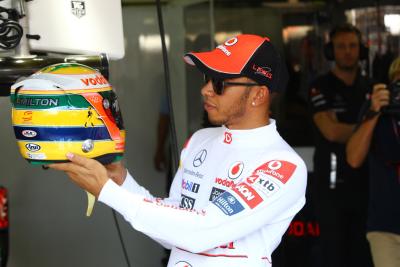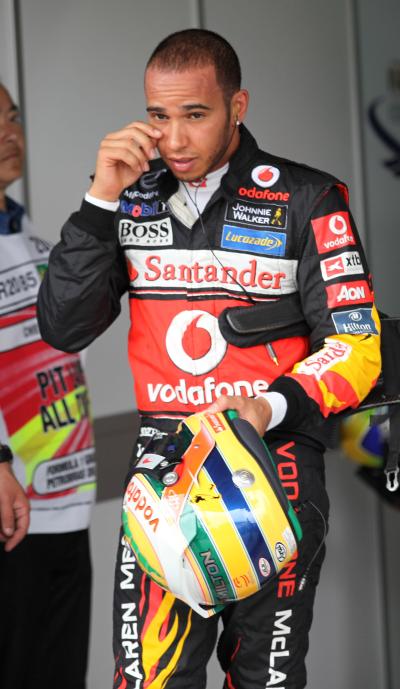Secrets of F1’s most physical tracks spilled by Lewis Hamilton’s ex-trainer
Antti Vierula was the personal trainer to Hamilton and now works alongside Valtteri Bottas.
He sculpted physical and mental training regimes around Hamilton’s needs in 2011 and 2012 to build the resilience, speed, and stamina which has resulted in a joint-record seven F1 championships.
“You try and get the best out of the time you have, and that's the case for training any athlete,” Vierula told OLBG about working with Hamilton.
“The racing schedule is so demanding, and the biggest challenge is weaving training into that schedule.
“The training can't hurt the athlete or stress them too much. Training also can't deplete the energy levels.
“You learn a lot about the athletes you're training as you spend time with them.
“The coach has to adapt training to the specifics of the individual, but that's something you naturally learn as time goes on.”
The fitness of F1 drivers has come under the microscope recently after the hot conditions during the Qatar Grand Prix.
Many drivers were critical of the heat and insisted it was over the limit.
''The Qatar heat is extreme, but heat tolerance is an individual thing,” Vierula explained.
“Some people cope better than others. You can train at the hottest time of the day or you can increase your clothing to replicate the heat, but hydration is the key thing.
“You need to develop a hydration plan in the build-up to the race!
“We try not to have too much fluid in the car, as that'll increase the weight.
“We take the maximum amount we can, and then have an electrolyte-filled drink ready to go for during and after the race.
''I'd say Qatar is the hardest track I have ever had to prepare a driver for, but that's due to the conditions, and not the track layout. It's hardcore.
''Both the heat and humidity are intense. The wind died off a bit towards the end of the race, and that further increased the humidity.
“The air doesn't flow into the cockpit, of course, as it has more important places to go! It can reach 55c in the cockpit, and when you follow the car closely, you get hot air in your face. It's horrible.”
The Mexico City Grand Prix presents a unique challenge in terms of the altitude.
''We noticed the altitude in the first few days,” Vierula said about his role with Alfa Romeo driver Bottas.
“You always do when you go to Mexico for a sporting event! You'll feel a bit out of breath and your heart rate might go a bit higher than it usually would.
“Some people may feel headaches or dizziness as it's 2,240 meters above sea level!
“You'll have less oxygen into your system and you can feel it a bit. It does, however, level down quite quickly.”
What are the most demanding tracks in F1?
''I'd say the hardest tracks are the ones with high-speed corners,” he said.
“There's a lot of braking involved, and those kinds of tracks are the most demanding.
“I’d say Suzuka is the hardest for the neck, the high speed corners give drivers a lot of work.
“Also Hungaroring is physically demanding, not many straights really, always turning somewhere.
“Monaco and Singapore are tough as well, there are a lot of corners and not really any straight lines to rest. It requires a high level of focus all the time.”




![Johann Zarco, LCR, Honda RC213V, 2024 San Marino MotoGP, Misano, action [Gold & Goose]](https://cdn.crash.net/styles/thumbnail/s3/2024-09/GnG_1166323_HiRes.jpg?itok=vpgrU7Q4)

![Jack Miller, KTM Factory Racing, KTM RC16, San Marino MotoGP, Misano, action [Gold & Goose]](https://cdn.crash.net/styles/thumbnail/s3/2024-09/GnG_1167624_HiRes.jpg?itok=iz7mA4EQ)


![Fabio Quartararo, Monster Energy Yamaha Racing, Yamaha M1, 2024 MotoGP, Misano Test, action [Gold & Goose]](https://cdn.crash.net/styles/thumbnail/s3/2024-09/GnG_1168928_HiRes.jpg?itok=fcYSole_)
![Toprak Razgatlioglu, ROKiT BMW Motorrad, BMW M 1000 RR, Magny-Cours, WorldSBK [Gold & Goose]](https://cdn.crash.net/styles/thumbnail/s3/2024-09/GnG_1165133_HiRes.jpg?itok=GD5SVNVG)

